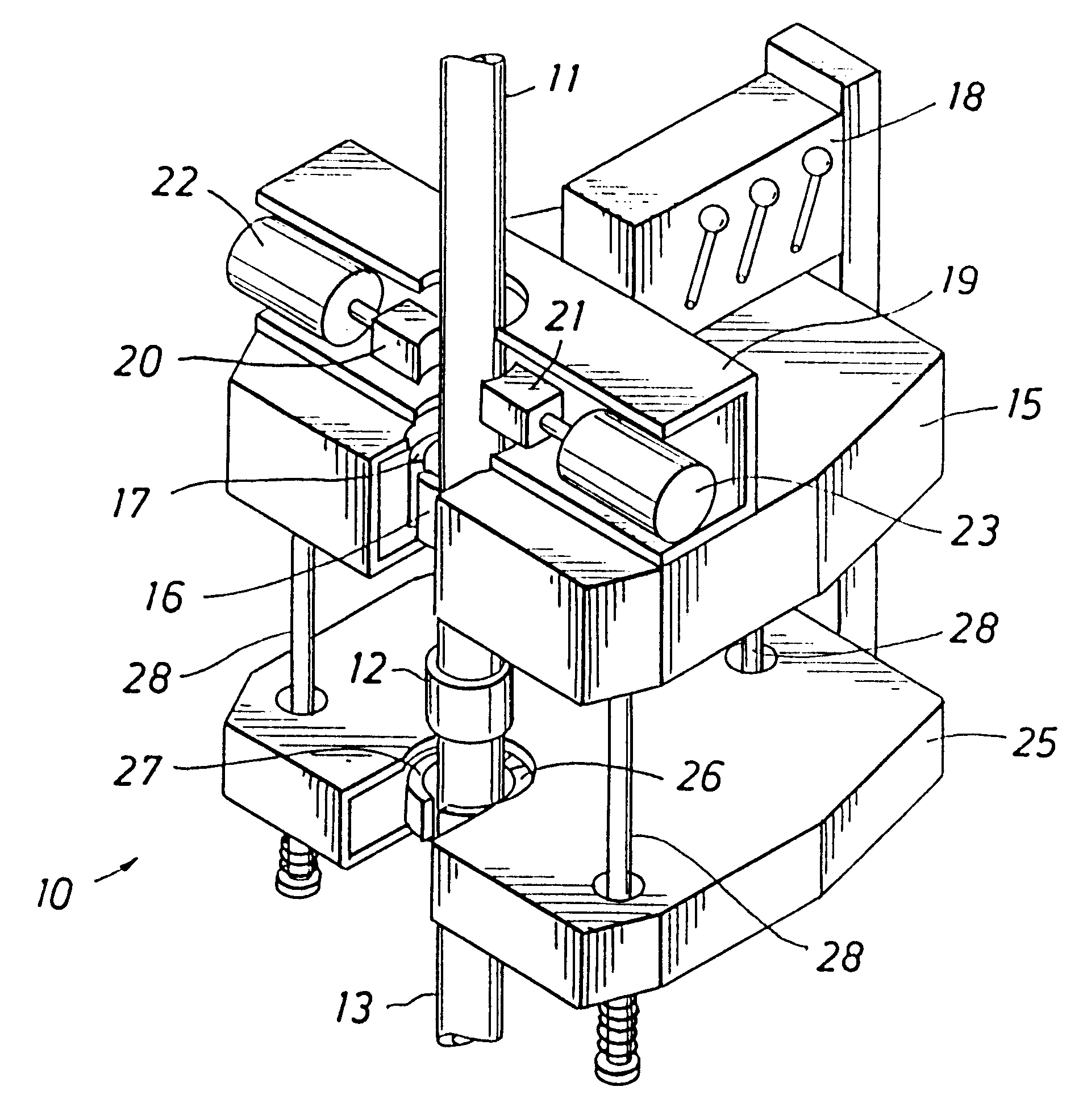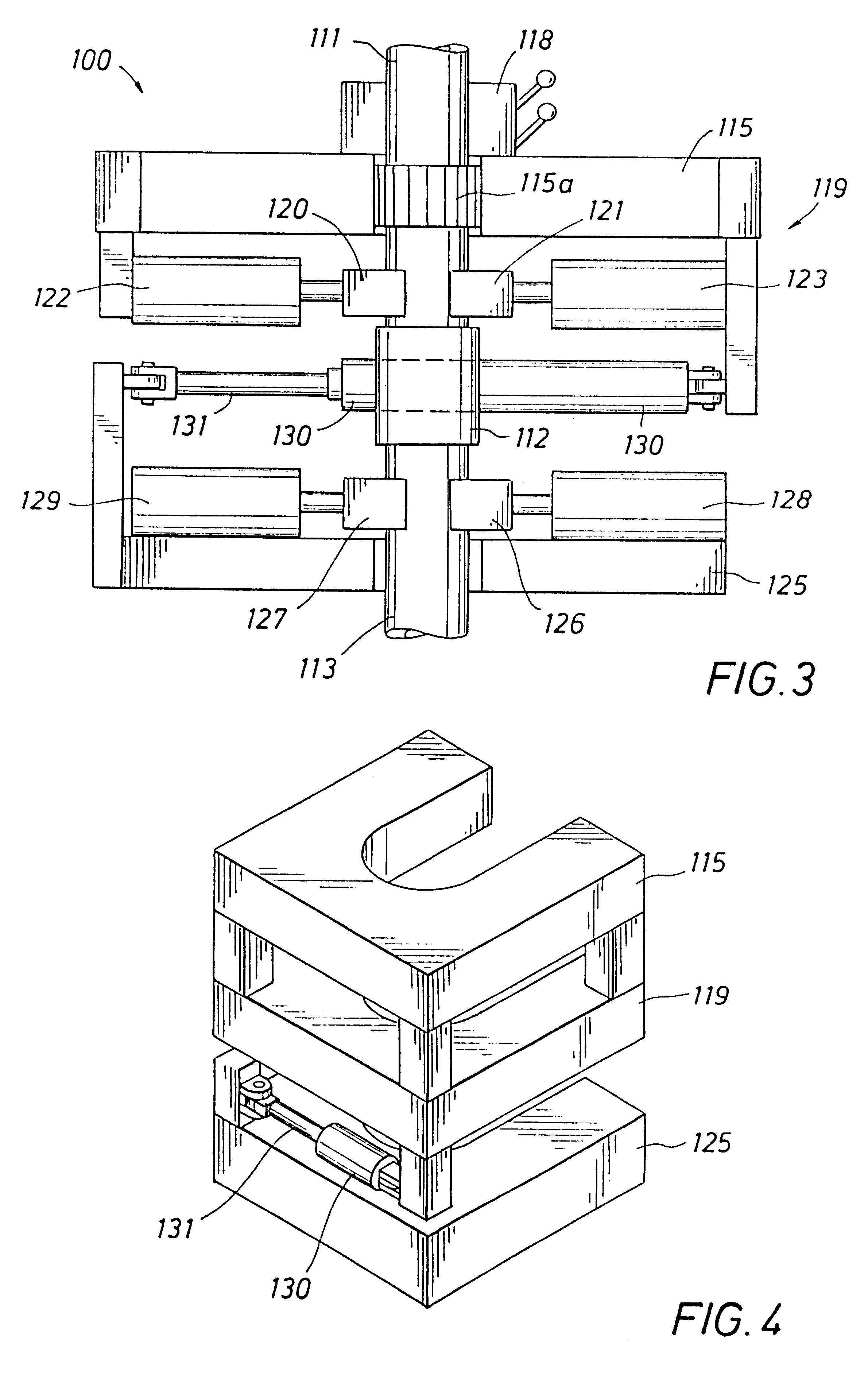Mechanical torque amplifier
a torque amplifier and mechanical technology, applied in the direction of wrenches, drilling casings, drilling pipes, etc., can solve the problems of insufficient power to release, affecting the operation of the rig, and requiring a larger and more expensive tong to perform the job,
- Summary
- Abstract
- Description
- Claims
- Application Information
AI Technical Summary
Problems solved by technology
Method used
Image
Examples
Embodiment Construction
The tong assembly of the present invention is indicated generally at 10 in FIG. 1. FIG. 2 schematically illustrates the major operative components of the assembly 10. Similar reference characters in FIGS. 1 and 2 signify the same or similar components. The assembly 10 is illustrated in a position about a pipe string segment comprised of an upper pipe joint 11, a coupling assembly 12, and a lower pipe joint 13. A primary rotary power section 15 of the assembly 10 is employed to rotate the pipe string. The assembly 10 engages the pipe joint 11 with jaws 16 and 17 carried in the rotary and adapted to grip and hold the pipe joint while the rotary turns. The jaws 16 and 17 operate conventionally and are designed to be selectively moved radially into and out of engagement with the pipe by circumferential displacement of camming surfaces formed between the jaws and the tong rotary. An operator-managed hydraulic system 18 controls the gripping, rotation, and power application of the tong se...
PUM
 Login to View More
Login to View More Abstract
Description
Claims
Application Information
 Login to View More
Login to View More - R&D
- Intellectual Property
- Life Sciences
- Materials
- Tech Scout
- Unparalleled Data Quality
- Higher Quality Content
- 60% Fewer Hallucinations
Browse by: Latest US Patents, China's latest patents, Technical Efficacy Thesaurus, Application Domain, Technology Topic, Popular Technical Reports.
© 2025 PatSnap. All rights reserved.Legal|Privacy policy|Modern Slavery Act Transparency Statement|Sitemap|About US| Contact US: help@patsnap.com



